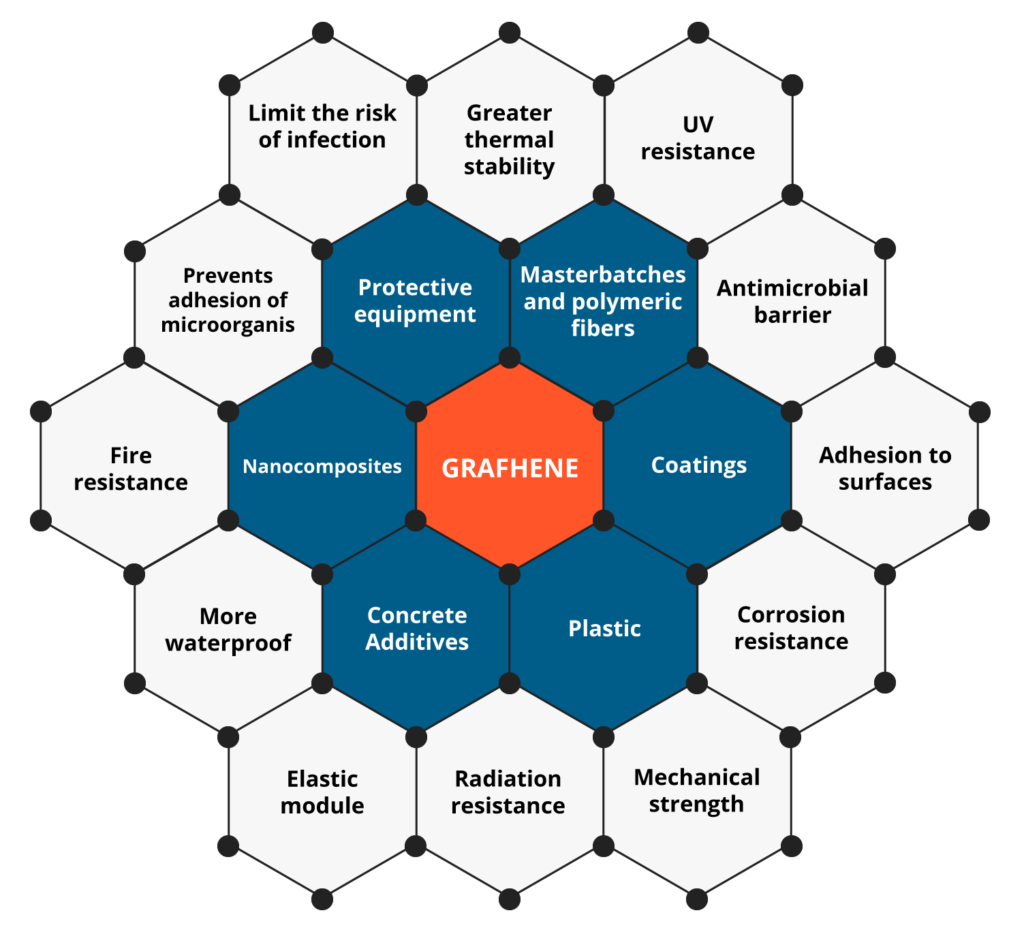The rise of graphene:
advances and developments in the last decade
Graphene is the most revolutionary nanomaterial of the 21st century and is considered the basic pillar for carbon nanochemistry, that is, the main element of all organic compounds.
Its versatility derives from its structure in the form of two-dimensional (2D) sheets, made up of carbon atoms linked in a hexagonal manner, and its importance lies in the extraordinary properties attributed to it and that have been conceived as the solution to innumerable social, environmental, scientific, technological and of course, economic needs.

Energeia Collection – Graphenemex
Graphene allows matter to be modified to design compounds with new or improved characteristics, since it transfers its properties to the materials to which it is incorporated. This has allowed it to be used in the development of applications that seek to potentiate these properties, as shown in the following image.

Evolution – Graphene was first isolated in 2004 by Russian researchers Andre Geim and Konstantin Novoselov from the University of Manchester; subsequently, and thanks to their experiments, in 2010 they were awarded the Nobel Prize in Physics, as it was considered one of the most important discoveries of the century.
So important was the finding that in 2013 the European Union (EU) granted a budget of one billion euros to create the Graphene Flagship, an ambitious project valid for ten years with the aim of linking academia with industry, not only to understand its properties theoretically, but to fully exploit its benefits in real applications or products.
From that moment on, the progress of the investigations was so fast, and the expectations were higher and higher that, in 2017, the first edition of the ISO/TS 80004-13:2017 standard emerged (Ratified by the Spanish Association for Standardization in October 2020) for the normalization and standardization of Nanotechnology in new materials, including Graphene.

In the same 2020, a group of 70 researchers who are members of the Graphene Flagship, published the first manual with more than 500 pages on countless types of Graphene. By 2021, around 50 “spin-offs” and “startups” with different visions were registered within the organization, making the possibility of having a greater number of applications with Graphene or graphene materials at more affordable costs a reality by 2022.
In 2021 again the EU through the Federal Institute for Materials Research and Testing (BAM) with the new ISO-G-SCoPe project, set the objective of standardizing the methods to transfer Graphene to the industry, this as a result of the non-existence of production and quality standards, while, through the Versailles Project on Advanced Materials and Standards, under the direction of BAM, it seeks to validate the processes in a global test to convert them into standards.
Energeia Graphenemex® is the pioneer Mexican company in Latin America focused on the research and production of graphene materials for the development of applications at an industrial level. Among its strengths is the creation of patented methods and processes for replicable and large-scale production that ensures the availability of the appropriate graphene materials in accordance with the requirements of the applications it develops, either for its own products or as a strategic ally of other companies interested in innovating and improving their products with these materials.

